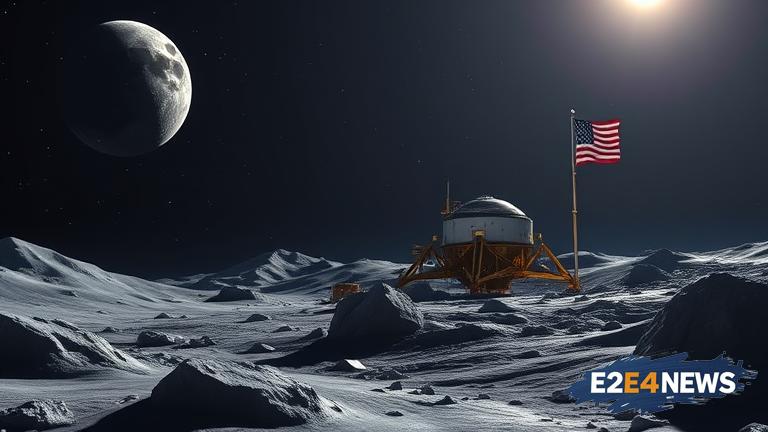The United States has announced plans to accelerate the development of a nuclear reactor on the moon, as the country seeks to strengthen its presence in space and counter the growing influence of China. The project, which is being led by the US Department of Energy, aims to design, build, and operate a nuclear reactor on the lunar surface by the end of the decade. The reactor will provide a reliable and sustainable source of energy for future lunar missions, as well as serve as a stepping stone for further human exploration of the solar system. The US is not alone in its pursuit of lunar ambitions, as China has also been actively pursuing its own lunar program, with several successful missions to the moon in recent years. The Chinese space program has made significant strides in recent years, with the country landing its first lunar rover on the moon’s far side in 2019. The US, however, is determined to maintain its leadership in space exploration and has been investing heavily in its own lunar program. The development of a nuclear reactor on the moon is seen as a critical component of this effort, as it will provide the necessary power to support future lunar missions. The reactor will be designed to be compact, lightweight, and highly efficient, with the ability to operate in the harsh lunar environment. The US Department of Energy has awarded contracts to several companies to develop the reactor, including Lockheed Martin and Westinghouse. The project is expected to cost several billion dollars, with the majority of the funding coming from the US government. The development of a nuclear reactor on the moon is not without its challenges, however, as it will require significant advances in technology and engineering. The reactor will need to be able to operate in the extreme temperatures and radiation conditions found on the lunar surface, as well as be able to withstand the harsh conditions of space travel. Despite these challenges, the US is confident that it can develop a nuclear reactor on the moon and is committed to making the project a success. The US is not the only country pursuing lunar ambitions, as several other nations, including Japan and India, are also planning to send missions to the moon in the coming years. The European Space Agency is also planning to send a mission to the moon, with the goal of establishing a sustainable human presence on the lunar surface. The competition for space dominance is heating up, with several countries vying for position in the lucrative space market. The US, however, is determined to maintain its leadership in space exploration and is investing heavily in its own lunar program. The development of a nuclear reactor on the moon is seen as a critical component of this effort, as it will provide the necessary power to support future lunar missions. The project is expected to have significant implications for the future of space exploration, as it will provide a reliable and sustainable source of energy for missions to the moon and beyond. The US is committed to making the project a success and is working closely with its international partners to achieve this goal. The development of a nuclear reactor on the moon is a complex and challenging project, but the US is confident that it can be achieved with the right technology and engineering. The project is expected to take several years to complete, with the first reactor expected to be operational by the end of the decade. The US is investing heavily in its lunar program, with the goal of establishing a sustainable human presence on the moon. The development of a nuclear reactor on the moon is seen as a critical component of this effort, as it will provide the necessary power to support future lunar missions. The project is expected to have significant implications for the future of space exploration, as it will provide a reliable and sustainable source of energy for missions to the moon and beyond.
